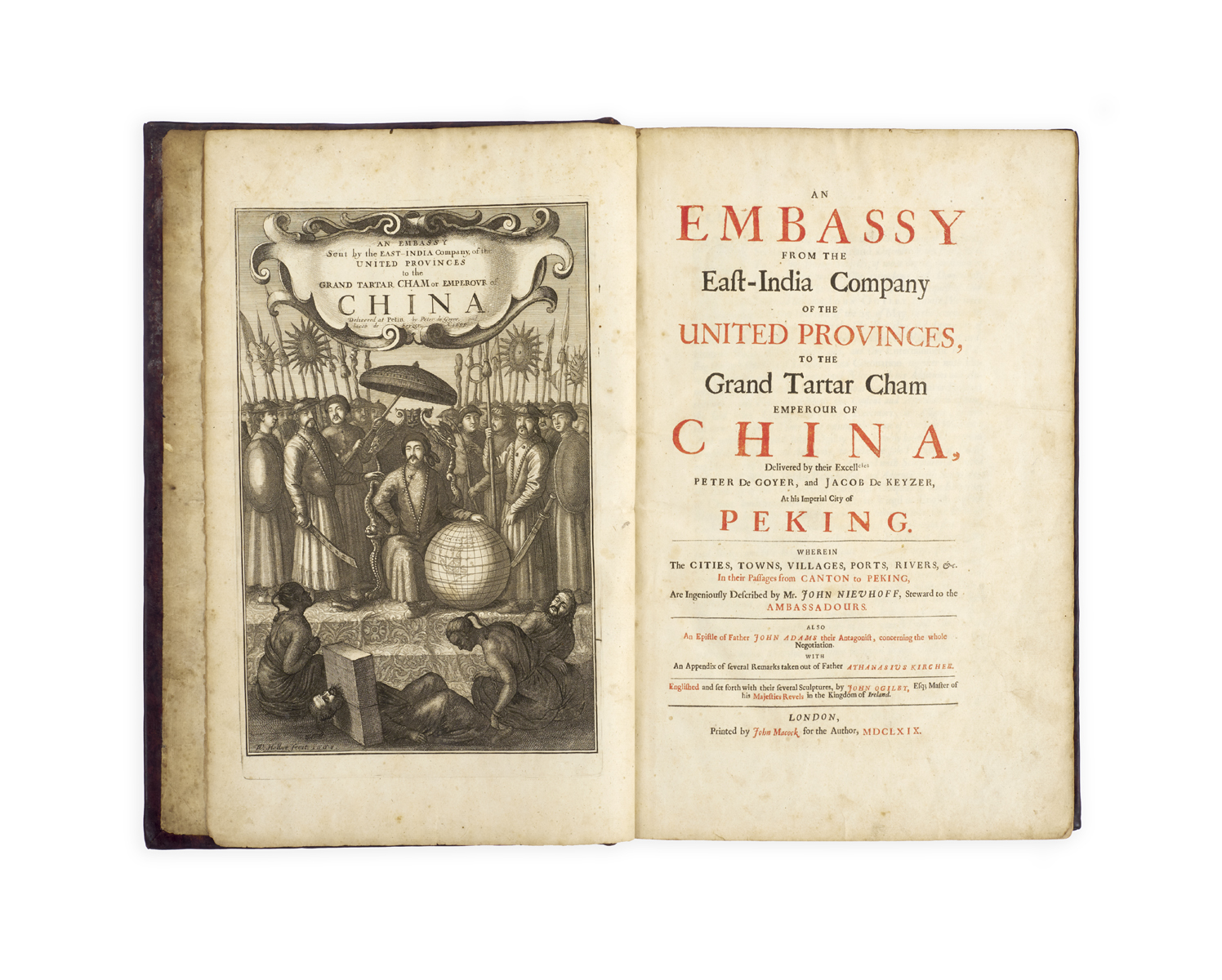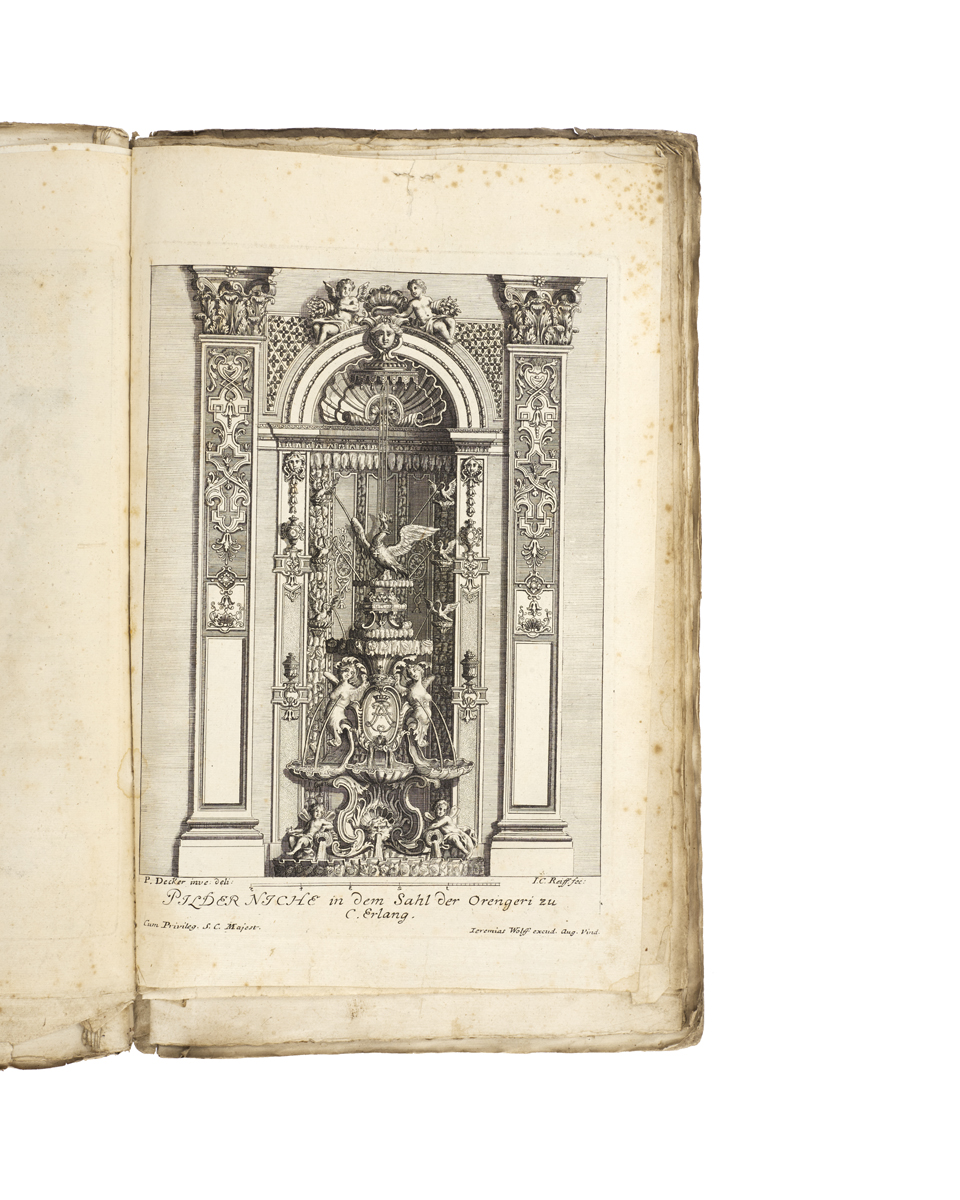
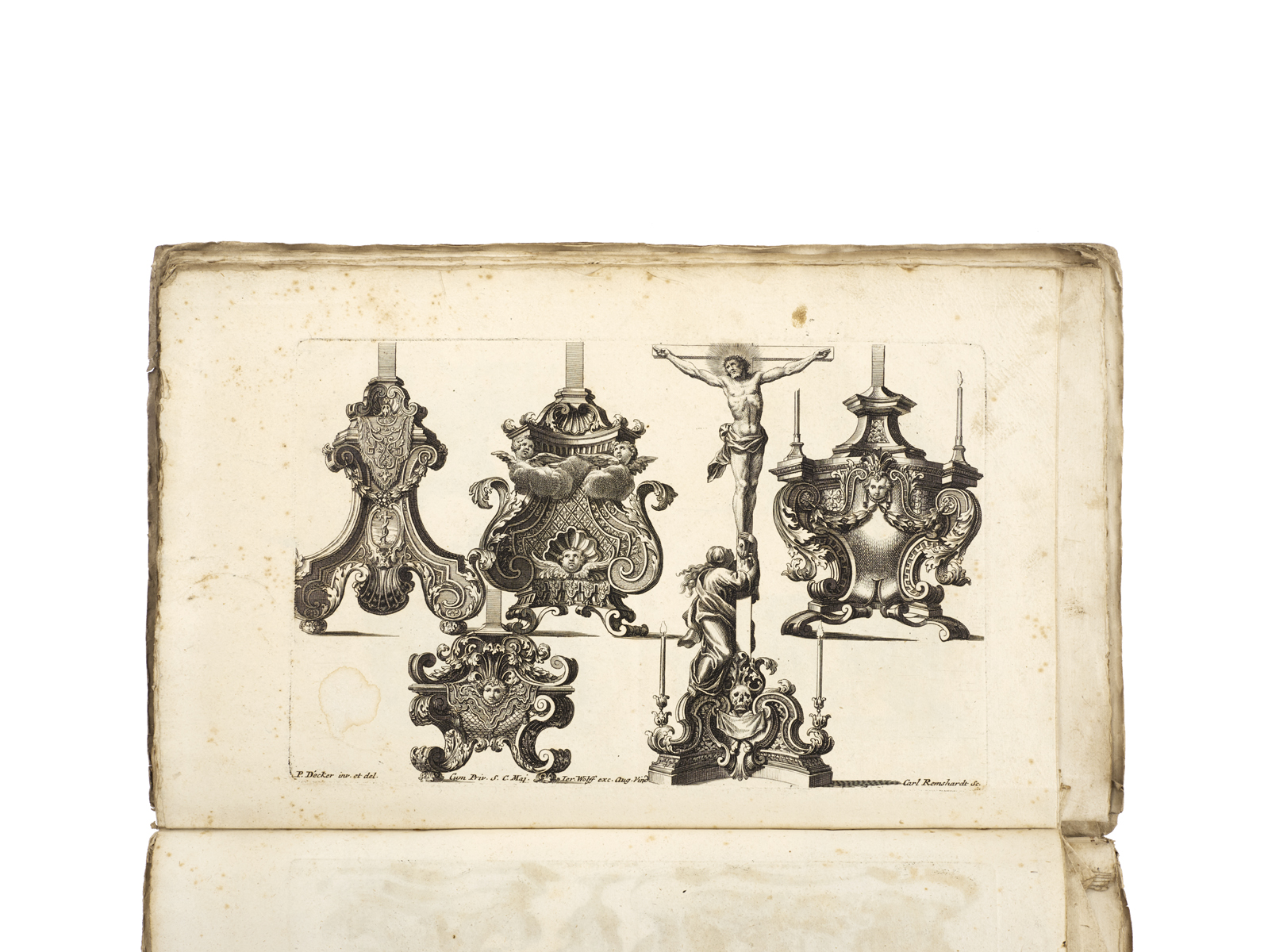
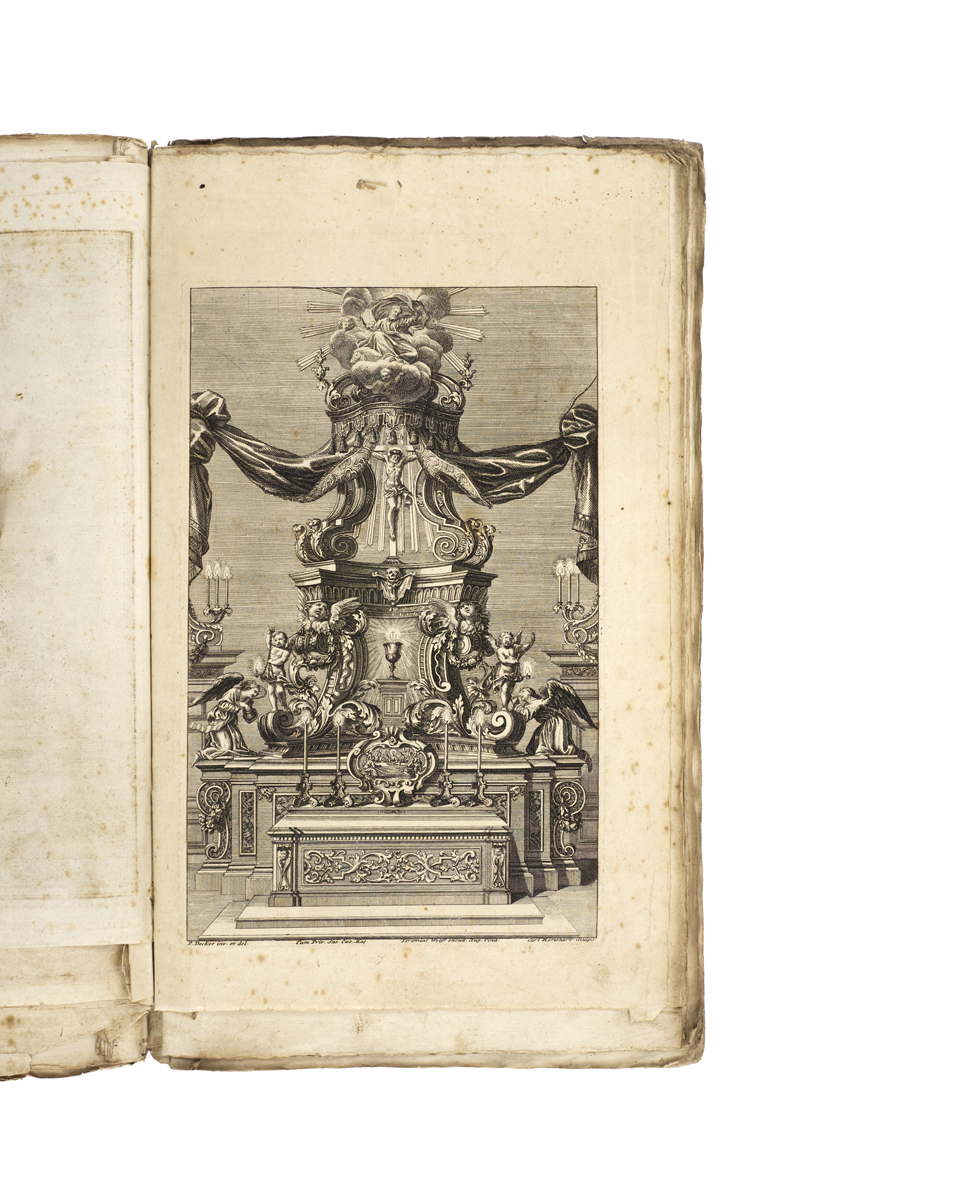
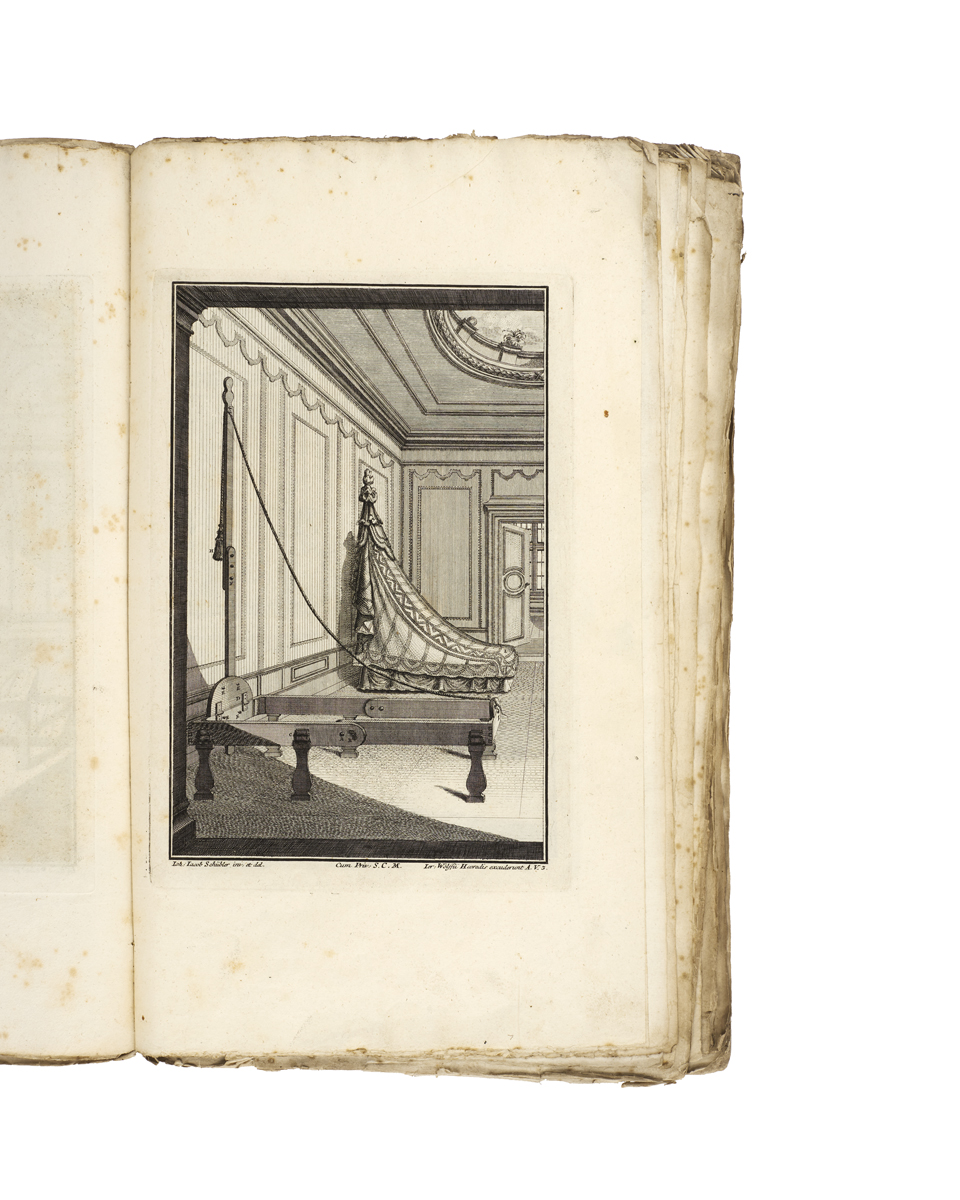

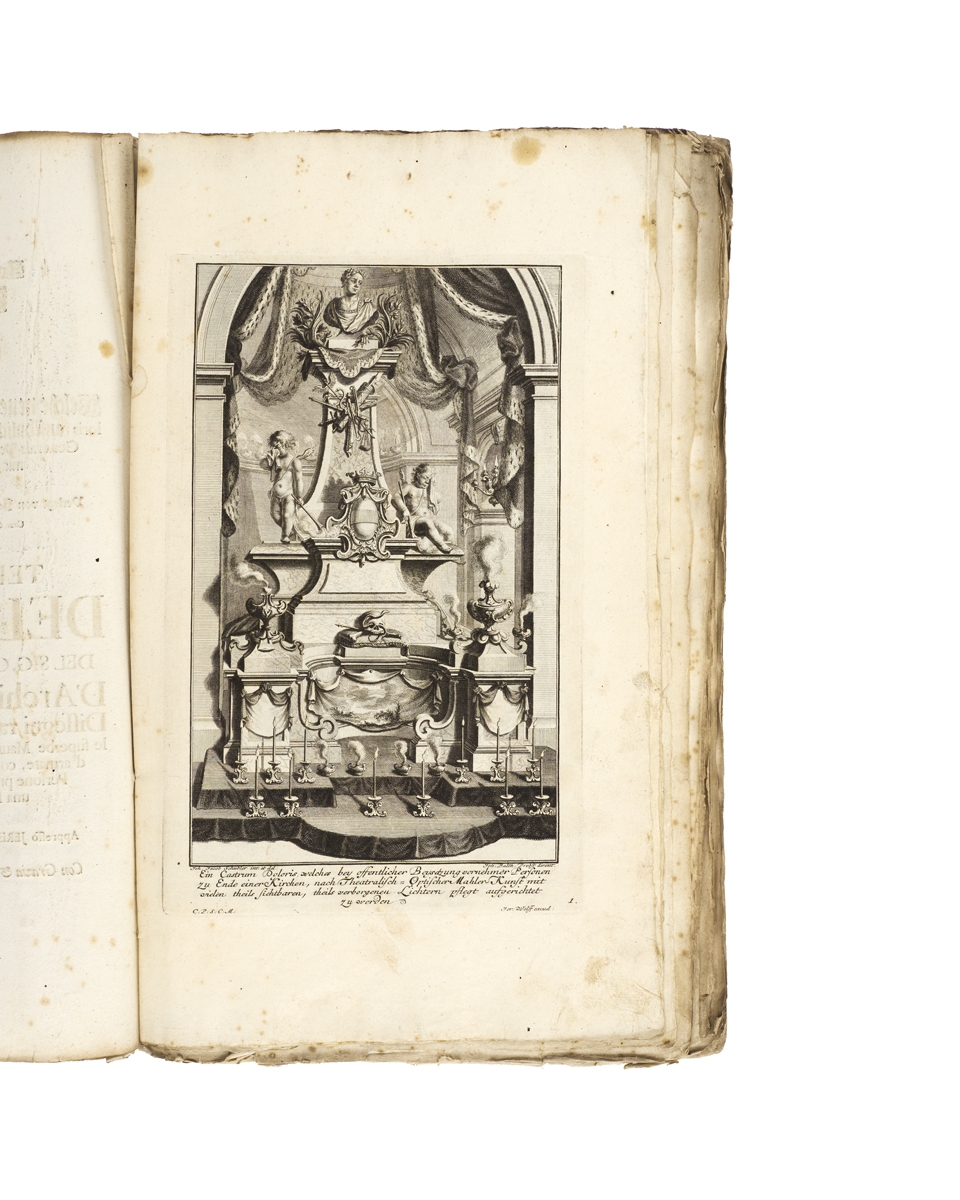
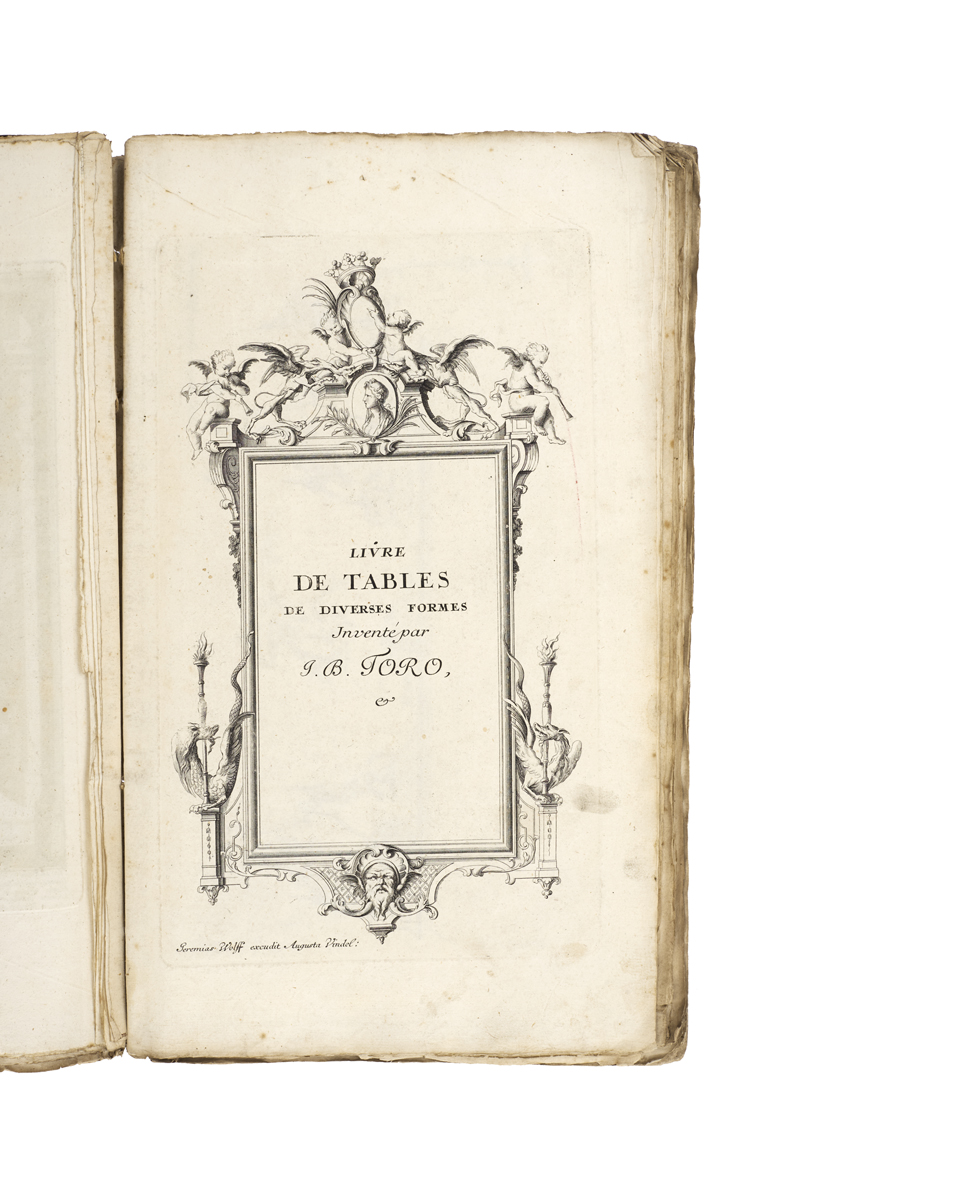
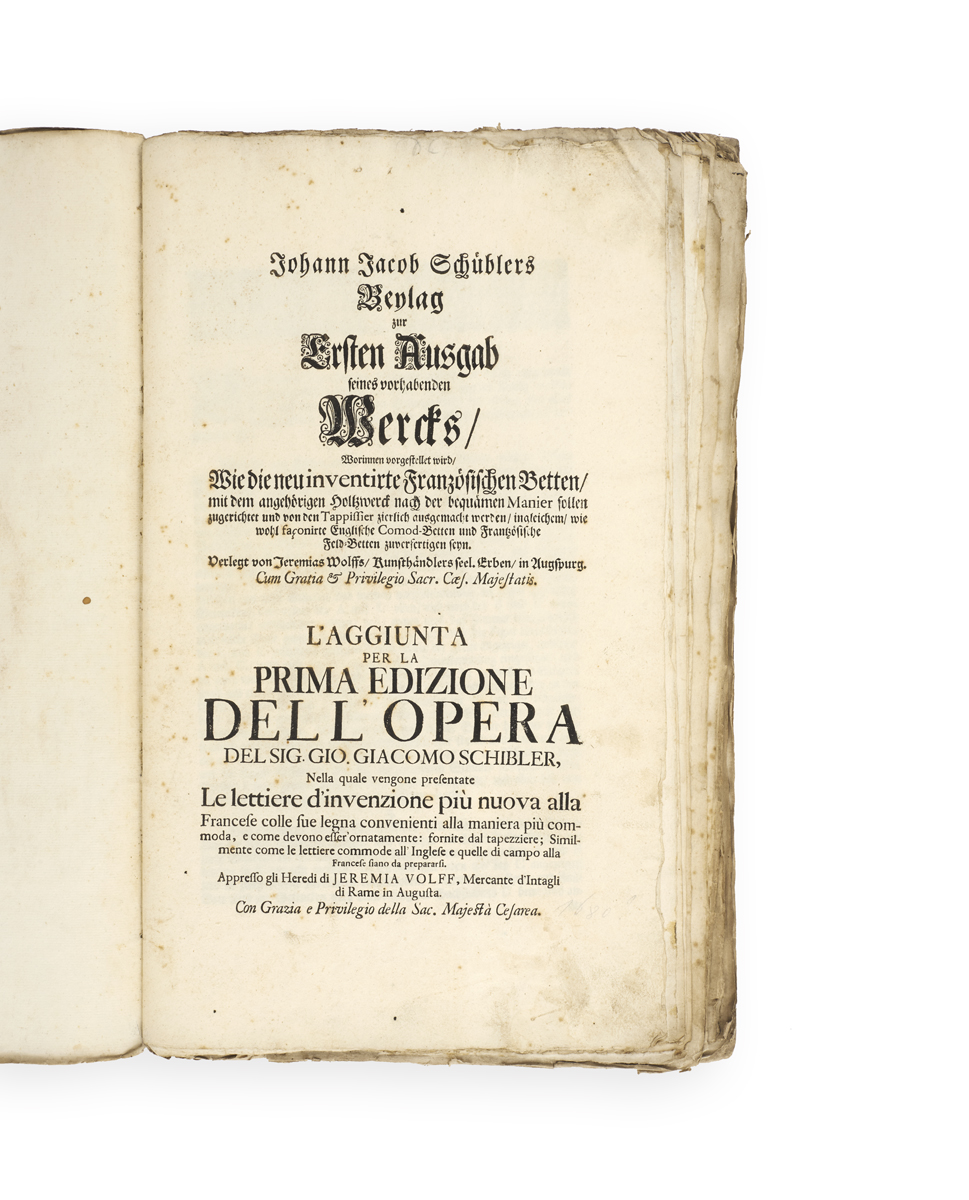
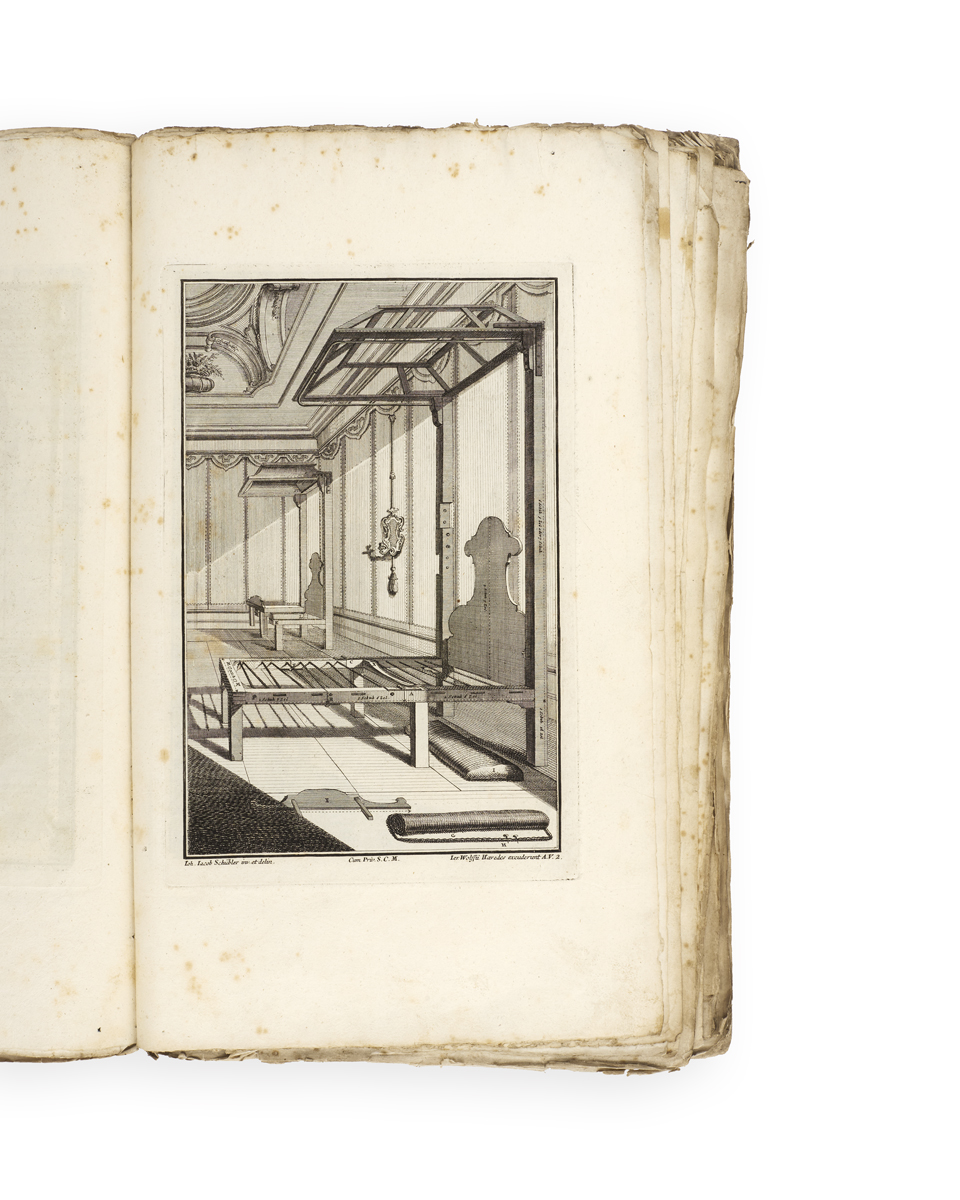
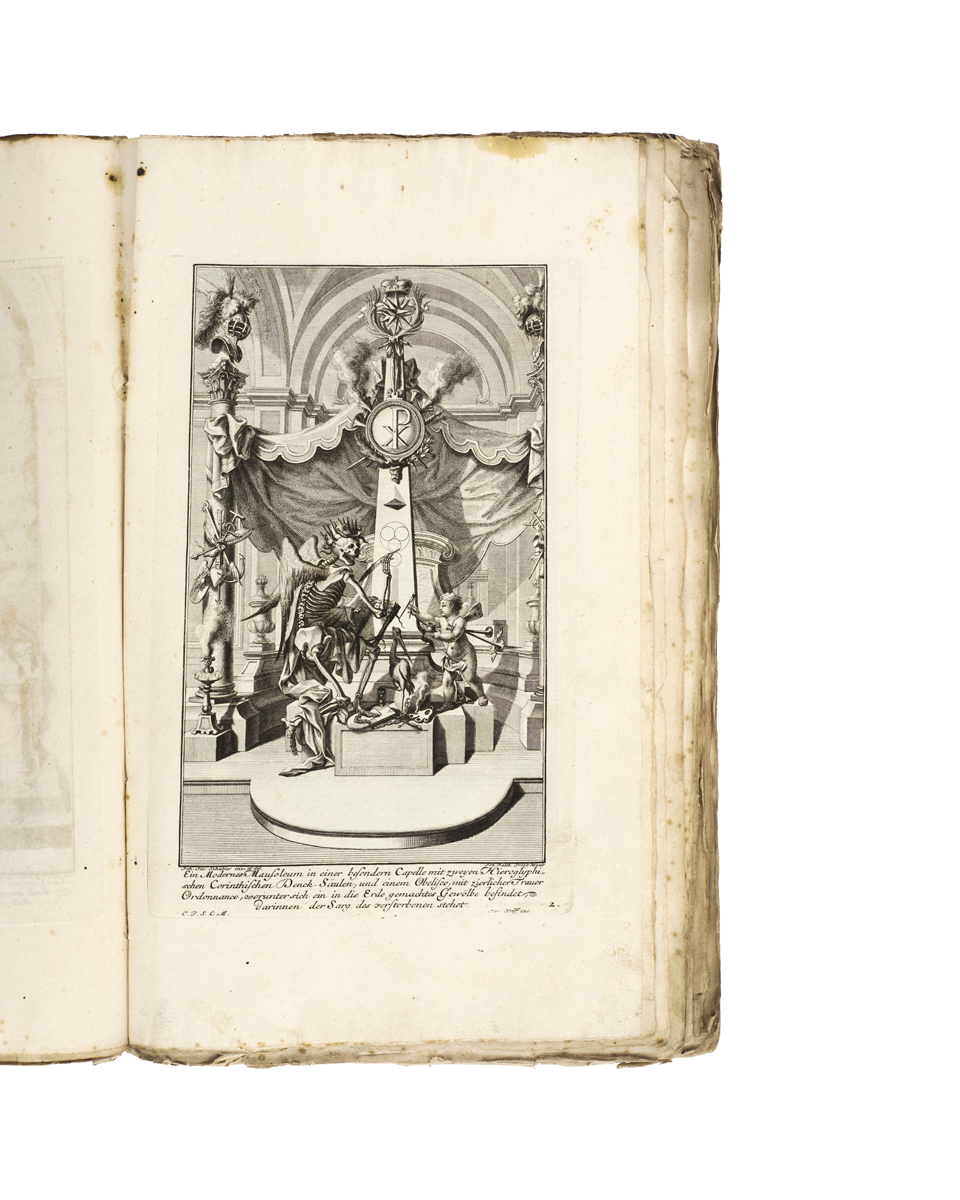
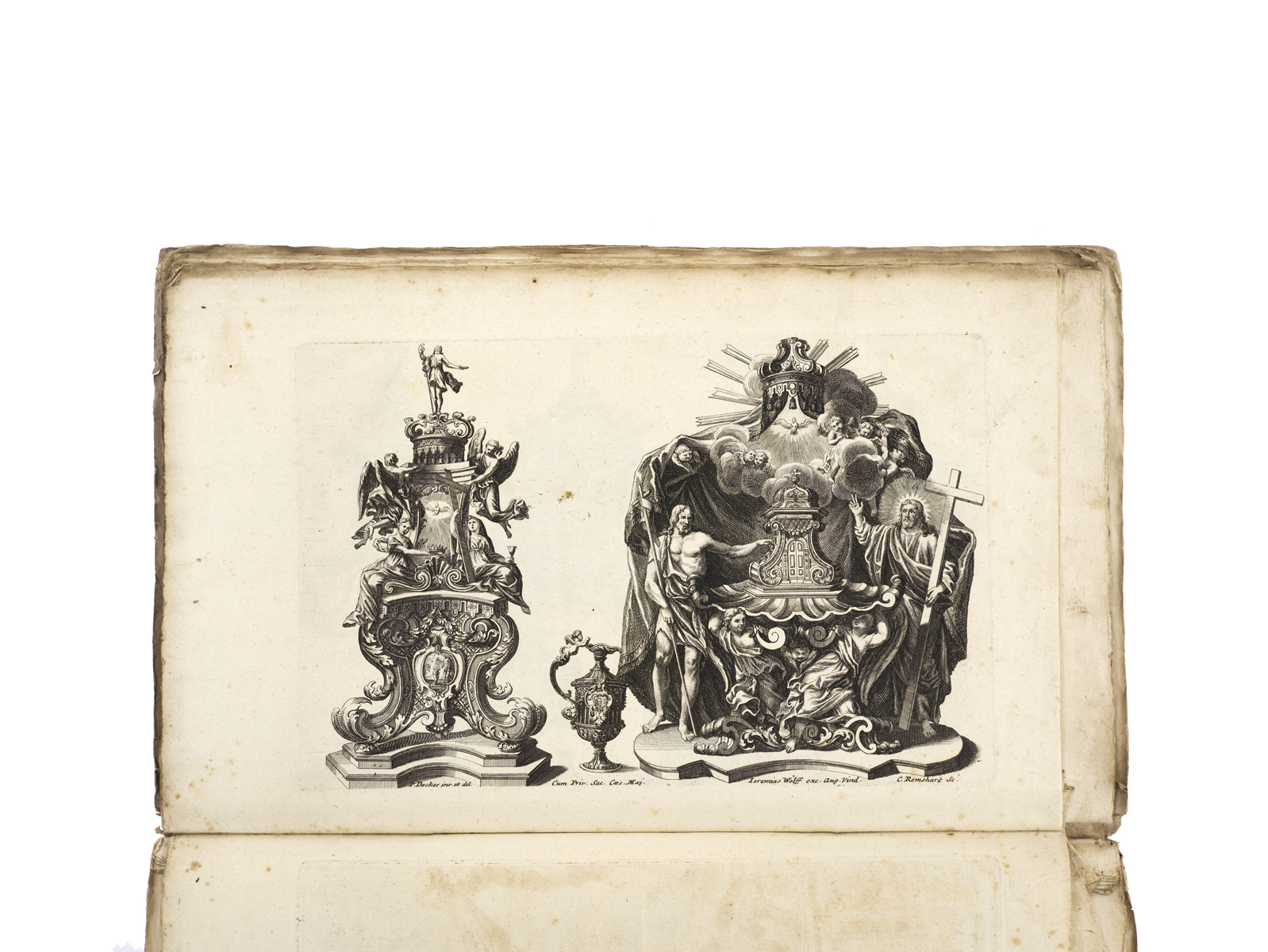
A DRAUGHTSMAN'S SAMPLEBOOK
SCHÜBLER, Johann Jacob, et al.
Designs for furniture, funerary monuments, garden buildings.
Augsburg, [c. 1710s–20s].
Eight items in one vol., folio (420 x 260 mm), containing a total of 52 engraved plates; some spotting, foxing, and light soiling, some creasing to corners and edges, marginal tears or chips to a few plates, overall good; sewn longstitch in eighteenth-century carta rustica; small tears and losses to spine, marks to covers; pencil sketches inside rear cover.
An interesting sammelband containing over fifty handsome engraved plates with late Baroque designs for furniture, monuments, and summerhouses, published at Augsburg by Jeremias Wolff (1663–1724) and his heirs, and by Joseph Friedrich Leopold (1668–1727).
The first four items comprise four parts taken from Johann Jacob Schübler’s twenty-part Ausgab seines vorhabenden Wercks, specifically the supplement to part 1, and parts 3, 6, and 7. A designer and mathematician, Schübler (1689–1741) published numerous sets of patterns, including furniture designs inspired by late French Baroque which were used all over Europe. Here we find his designs for beds, including folding beds (‘Englische Comod-Betten und Französische Feld-Betten’, with prefatory explanatory text); funerary monuments and tombs; armchairs and tables, set within handsome rooms; and summerhouses and fountains (all with captions within the plate).
Schübler’s work is followed by five designs for ornately legged tables by the influential French sculptor and designer Jean-Bernard Toro (or Turreau, 1661–1731), ‘an outstanding draughtsman’ (Grove Art Online) known above all for his ornamental designs. ‘He was inspired by the art of the Renaissance and one of his favourite themes was that of fantastic beings entangled in foliage, from which their angry or sorrowful heads and their helpless wings emerge’ (ibid.) – in evidence here.
Following this comes a mixed set of plates after designs by Paulus Decker (1677–1713) depicting, inter alia, funerary monuments, a chimneypiece and a fountain at the Orangery in Erlangen, mirrors, bases for crucifixes, and candlesticks. Six unsigned designs for elaborate cartouches follow, and the volume closes with six plates carrying designs for tables and tableware.
Contents:
SCHÜBLER, Johann Jacob. Beylag zur ersten Ausgab seines vorhabenden Wercks, worinnen vorgestellet wird, wie die neu inventirte Französischen Betten … L’aggiunta per la prima edizione dell’opera … nella quale vengone presentate le lettiere d’invenzione piu nuova alla Francese … Augsburg, heirs of Jeremias Wolff, [1720s?]. Pp. [4], 6 plates.
—. Dritte Ausgab seines vorhabenden Wercks, welche neue architectonische castra doloris … Terza edizione dell’opera … d’architettura, contenente dissegni rari di castridolori … Augsburg, Jeremias Wolff, [1720s?]. Pp. [2], 6 plates.
—. Sechste Ausgab seines vorhabenden Wercks, worinnen neu-faconirte Commod- und Schlaff-Sessel … Sesta edizione dell’opera … nella quale vengono presentate sedie d’inventione piu nuova molto commode da dormire … Augsburg, heirs of Jeremias Wolff, [1720s?]. Pp. [2], 6 plates.
—. Siebende Ausgabe seines vorhabenden Wercks, worinnen vorgestellet werden neu-inventierte Sommer-Häuser … Edittione settima dell’opera … per la quale si rappresenta le case per la staggione dell’està … Augsburg, heirs of Jeremias Wolff, [1720s?]. Pp. [2], 6 plates.
TORO, Jean-Bernard. Livre de tables de diverses formes inventé par J.B. Toro … Augsburg, Jeremias Wolff, [1710s?]. Pp. [2 (engraved title)], 5 plates.
DECKER, Paulus. [Designs after Paulus Decker, engraved by Joseph von Montalegre, Jean Conrad Reiff, and Karl Remshard.] Augsburg, Jeremias Wolff, [1710s?]. 11 plates.
WOLFF, Jeremias. [Designs for decorative cartouches.] Augsburg, Jeremias Wolff, [1720s?]. 6 plates.
LEOPOLD, Joseph Friedrich. [Designs for decorative tables and tableware.] [Augsburg,] Joseph Friedrich Leopold, 1720. 6 plates.

